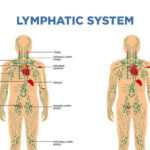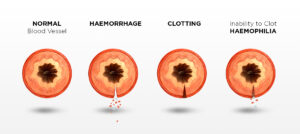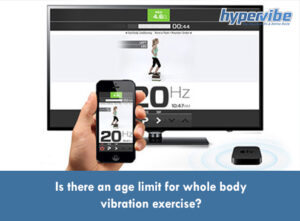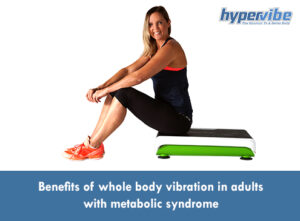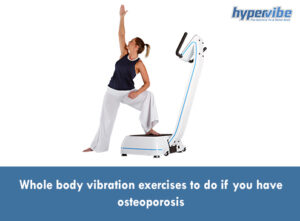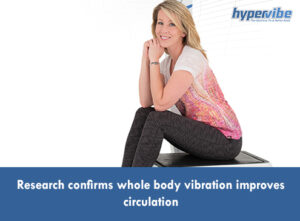Thalassaemia & Whole Body Vibration – The State of the Research
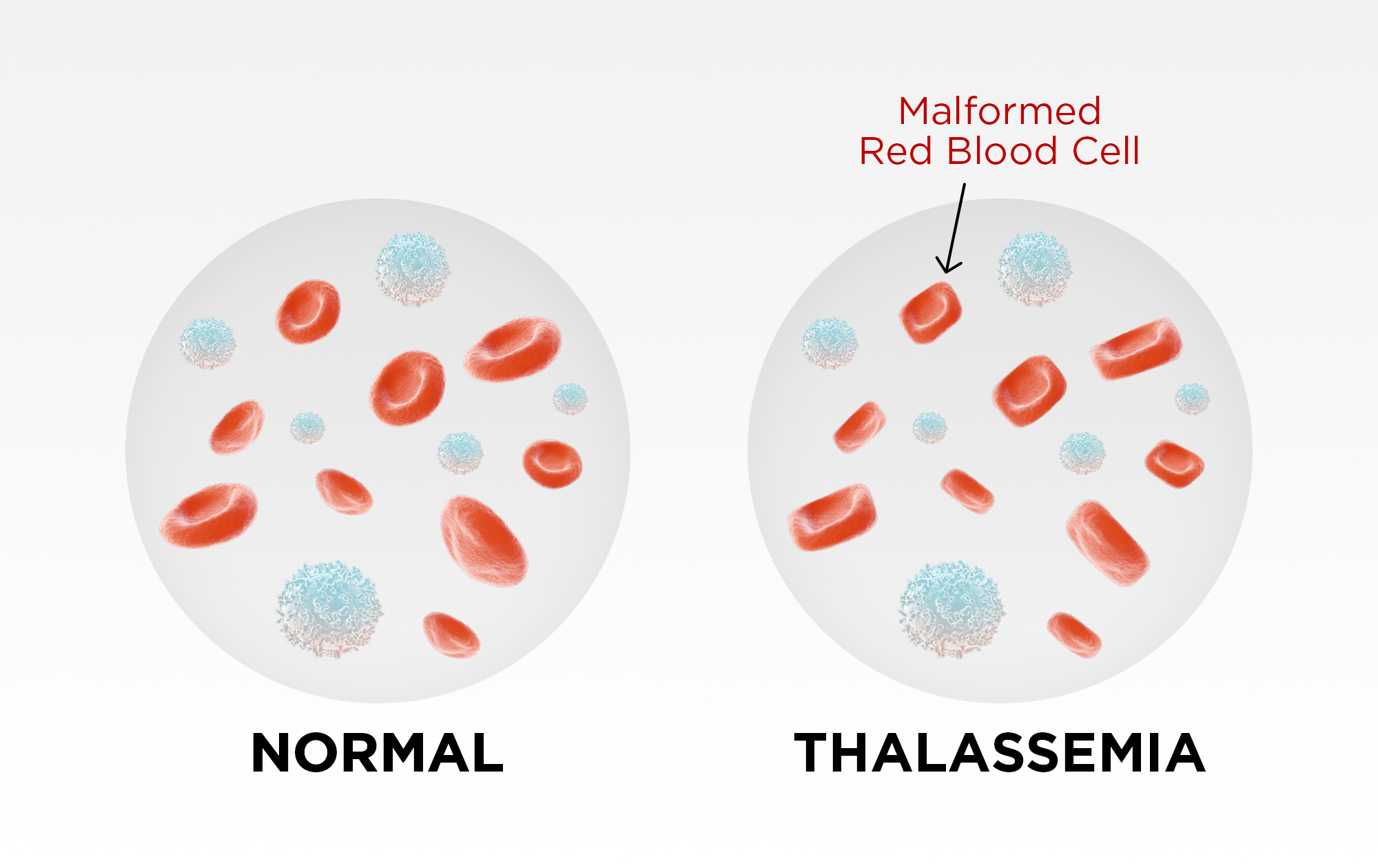
Have you ever heard of thalassaemia? Although many individuals live with this condition, it is not one that is familiar to most people. Thalassaemia is an inherited blood disorder that affects the production of haemoglobin, the protein within red blood cells which transports oxygen. The associated destruction of red blood cells leads to anaemia, causing severe fatigue and weakness, shortness of breath, dizziness, headaches, skin disorders, skeletal deformities and decreased growth. All of these issues impact an individual’s ability to lead a normal life. Once known to physicians only as a childhood disease, survival rates into adulthood have significantly increased thanks to a greater understanding of the condition which has led to more comprehensive care. As a result, it has become especially important not only to help patients manage the medical aspects of care, but to also address their quality of life.
Before exploring the potential role of whole body vibration as it relates to thalassaemia, it is first necessary to understand what thalassaemia is as well as the challenges that it imposes on exercise and activity. There are two main types of thalassaemia based on which protein in the haemoglobin is lacking. Alpha thalassaemia develops from an inadequate amount of alpha-globin which affects the expression of chromosome 16. The number of genes that are affected determines whether the individual simply has the trait, is a silent carrier of the disease or whether a more severe form of the disease develops. It is most commonly seen in individuals of African, Middle Eastern, Indian, Southeast Asian and southern Chinese descent and occurs less commonly in people of Mediterranean descent.
Beta thalassaemia occurs due to a defect on chromosome 11 which impacts the beta-globin gene. An individual with beta thalassaemia may be diagnosed with having the beta thalassaemia trait, beta thalassaemia minor, beta thalassaemia intermedia or beta thalassaemia major. If only the trait is present or the diagnosis is beta thalassaemia minor, the individual will have no health problems at all or a mild form of anaemia. In the case of beta thalassaemia intermedia or major, the individual will have inherited two defective genes (one from each parent) and will experience moderate to severe health problems depending on which form is acquired.
Beta thalassaemia major, also known as Cooley’s anaemia (named after Thomas Benton Cooley, the researcher who is credited to have discovered the disorder), is typically diagnosed before age two and often identified within the first 6 months of life. It is most commonly present in individuals of Mediterranean heritage (Italians and Greeks) with a lesser prevalence in individuals of African, Middle Eastern, Southeast Asian and southern Chinese descent. Those with this form of thalassaemia require lifelong medical care, which involves regular blood transfusions as well as iron chelation therapy to remove excess iron from the body. Careful management of diet and monitoring of other medical conditions are also key elements in helping the individual to live as healthy of a life as possible.
As with most chronic diseases, there are various complications associated with thalassaemia. Haemochromatosis, which refers to the accumulation of iron in the tissues, must be identified and treated appropriately in order to minimize organ damage. It occurs both due to increased iron absorption in the gut and frequent blood transfusions. Diabetes is a common occurrence in patients with beta thalassaemia major due to the insulin resistance that develops as a result of liver dysfunction. The spleen tends to become enlarged (splenomegaly) as it works excessively to filter damaged red blood cells, leading to worsening anaemia. As a result of this, some individuals must have their spleens removed which leaves them more susceptible to infections. There are also skeletal deformities that result from the expansion of the bone marrow, leading to the development of osteopenia or osteoporosis (brittle bones). Additionally, heart problems including arrhythmias and congestive heart failure may develop in individuals who have the more severe forms of thalassaemia.
How much activity can someone with thalassaemia tolerate? Exercise tolerance and activity levels are variable depending on the severity of its presentation. Understanding the vast implications of how thalassaemia affects the body makes it easier to comprehend some of the challenges that people face in trying to remain active. Muscle and bone strength are generally compromised in patients with thalassaemia due to the physiological changes that contribute to limited activity level. Considering these factors, whole body vibration offers a truly efficient exercise method while providing many health benefits including enhanced circulation, increased muscle strength and improved bone density.
Bone health is of particular concern in patients with thalassaemia due to the high incidence of osteoporosis. It has been estimated that as these individuals age, they lose 1 to 2% of bone mass per year starting in their thirties. In a pilot study conducted in 2012, a 6-month whole body vibration program was implemented with patients with thalassaemia to determine its effect on bone density. A total of 18 subjects (9 adults and 9 adolescents) participated in 20-minute in-home WBV sessions, 6 days per week at a frequency of 30 Hz and a G-force of 0.3 g. Researchers assessed both cortical (the dense outer surface of the bone that makes up 80% of the bone tissue) and trabecular bone (the internal spongy layer which is composed of the bone marrow where blood cells are made) at three intervals (baseline, 6 months, and 12 months) using pQCT (peripheral quantitative computed tomography, which looked at aBMD or aerial BMD) and DXA (x-ray absorptiometry, which examined vBMD, or volumetric BMD).
The findings demonstrated a 2.6% increase in whole body BMC (bone mineral content) in the adult subjects, which remained elevated at the 12 month mark following the intervention. Lean body mass also increased, however, there was no significant change in the percentage of body fat. The outcome for the adolescents revealed increased cortical bone density, which has important implications for future benefits of WBV. It is important to note that the plate that was used during this study was the Juvent 1000 Dynamic Motion Device. This particular platform has been thought to work by stimulating the fluid within the bone tissue, however, it only produces a fraction of the vibration that is generated by higher capacity devices. With this in mind, the potential changes in bone density using a WBV plate that produces a higher level of G-force (e.g. Hypervibe, Galileo) are much greater, which has been reinforced in the research.
Another WBV study was published earlier this year that looked at the bone density and functional capacity of children with beta thalassaemia major. This randomized controlled trial included 39 subjects, 23 boys and 16 girls, ranging in age from 6 to 10 years. In children, the primary implication of declining bone density is a higher fracture risk associated with hormonal dysfunction, iron overload and vitamin D deficiency, all of which affect growth as well as mental well-being. Children who aren’t able to be as active as their peers are also at a higher risk for suffering from anxiety and depression. Identifying safe methods of exercise is especially crucial in this population and whole body vibration shows a great deal of promise as a viable option.
This study utilized DEXA (dual-energy x-ray absorptiometry) to assess BMD (bone mineral density) of the lumbar spine (low back), femoral neck (hip) and total body before and after a 24-week WBV program. Functional capacity was assessed using the 6-minute walk test, a standardized test that is administered clinically to evaluate walking ability and cardiovascular function in many different paediatric and adult populations. The children performed WBV 3 days per week, for a total of 15 to 20 minutes a day, consisting of 10 repetitions (30 to 60 seconds) with a 1-minute rest break in between. They stood barefoot on the plate while maintaining a semi-squat position with their knees flexed to 30 degrees. The subjects also received their necessary medical treatments, including chelation therapy and physical therapy which included stretching, strengthening, balance activities and proprioceptive training, one hour daily, three times a week for the duration of the study. The findings revealed a significant increase in the BMD of all three sites compared to baseline values. The subjects also demonstrated a significant increase in their 6-minute walk test scores, indicative of their functional improvement.
In contrast to the adult study, this study utilized the Power Plate, a WBV plate in which the platform moves vertically. This type of vibration is also known as synchronous, whereas the motion produced by a pivotal (side-alternating plate) such as Hypervibe, is known as asynchronous. It is important to note that all vibration plates produce effects to varying degrees. Pivotal plates are most widely used in the research as they follow the natural motion of the pelvis during gait. Anatomically, the pelvis moves in an alternate up and down fashion, rising on one side and falling on the other during walking. While vertical plates are also very effective in transmitting vibration, the vibration is absorbed differently and the sensory experience also tends to be less comfortable, depending on the user. In the above study, there were transient responses of discomfort which included dizziness (three children complained of this symptom during the first two sessions and it resolved immediately after stopping) and itchiness (which spontaneously resolved in several days and is common with the initial use of any WBV plate). It is pertinent to note that dizziness is a more common occurrence on a vertical plate due to the fact that more vibration is transmitted to the head as compared to a pivotal plate.
Science is always evolving. While these two studies show only a glimpse of the possible outcomes for patients with thalassaemia, their favourable results provide some insight into the potential benefits of WBV in this population. With the progression of research, it is anticipated that evidence will continue to support WBV as a tool to enhance the health, well-being and quality of life of those who suffer with thalassaemia and other chronic medical conditions.
REFERENCES
Articles:
Effect of Whole Body Vibration Training on Bone Mineral Density and Functional Capacity in Children with Thalassaemia. Eid et al. Physiotherapy Theory and Practice. April 2019.
The Effect of Whole Body Vibration Therapy on Bone Density in Patients with Thalassaemia: A Pilot Study. Fung et al. American Journal of Haematology. Oct. 2012.
Organizations:
CDC Thalassaemia Homepage
https://www.cdc.gov/ncbddd/thalassemia/index.html
Cooley’s Anaemia Foundation
https://www.thalassemia.org/learn-about-thalassemia/about-thalassemia/
Mayo Clinic Thalassaemia Homepage
https://www.mayoclinic.org/diseases-conditions/thalassemia/symptoms-causes/syc-20354995
National Organization of Rare Disorders





